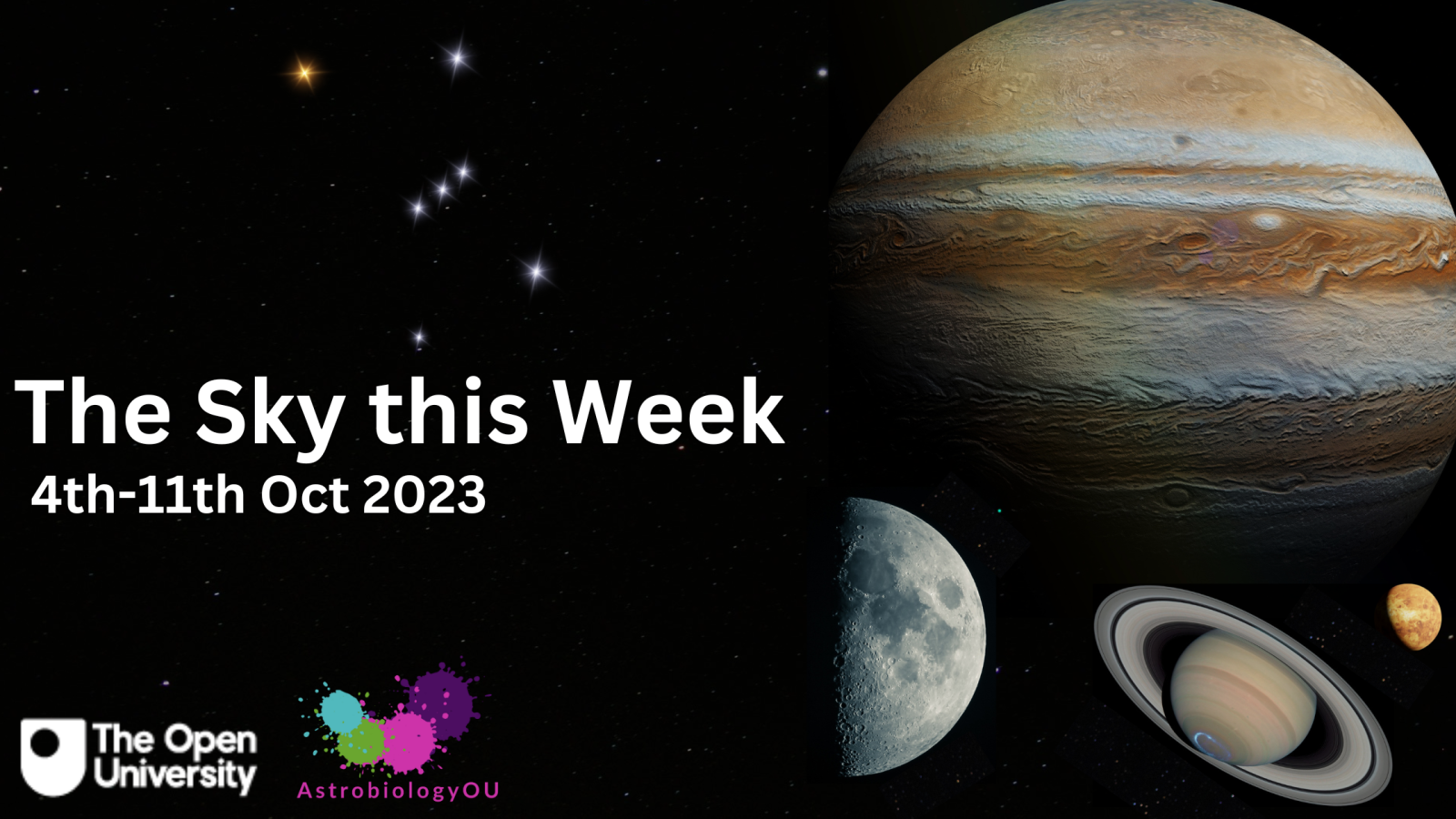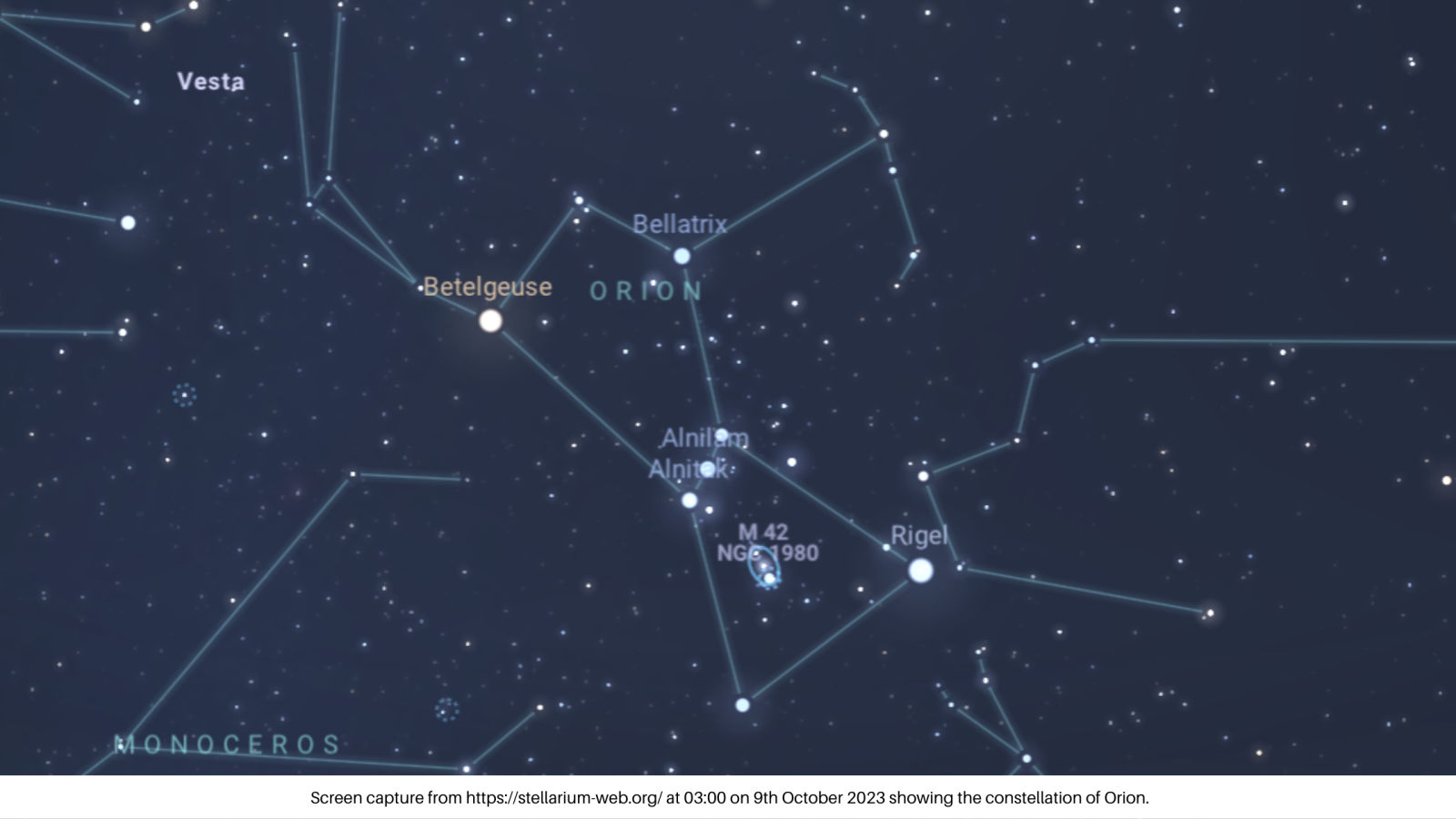You are here
- Home
- The Sky this Week - 4th-11th October
The Sky this Week - 4th-11th October

It’s World Space Week and there are some exciting objects visible in the sky this week, not just for night owls but for early risers too. All visible to the naked eye, you’ll be able to see planets, a day moon, constellations and one of the brightest stars in the night sky.
The Moon
The Moon rises later each day this week, not making an appearance until 3 am on the 11th. Beginning the week at a phase of 67% and dropping down to 11% at the end of the week, the benefit of this waning is darker skies which allow fainter objects to be seen. With its late rise, the Moon will stick around longer into the day with a beautiful half-moon visible until late afternoon during the first half of the week.
Jupiter
Visible from dawn until dusk all week, Jupiter will present as one of the brightest objects in the sky. Rising in the East just above the horizon and heading higher into the sky throughout the night. If you own a telescope or a pair of binoculars with high magnification, you may be able to make out some of Jupiter’s largest moons: Callisto, Europa, Ganymede and Io as they orbit the gas giant. Early risers will also be able to see Jupiter just before sunrise towards the South, forming a stunning arc with the Moon and Venus around 06:30 on the 6th October.
 Figure 1: Image showing the sky on 6th October 2023 at 06:30 showing Venus, the Moon and Jupiter. Image from https://stellarium-web.org.
Figure 1: Image showing the sky on 6th October 2023 at 06:30 showing Venus, the Moon and Jupiter. Image from https://stellarium-web.org.
Saturn
Not as bright as Jupiter, but still a bright feature of clear skies this week will be Saturn. Lying low in the sky for most of the night but reaching its highest point just after 22:30, you’ll be able to see it by looking South. Its glow will be steady, not ‘twinkly’ like a star, and that’s how you’ll know you’re looking at a planet.
The Orion Constellation
For the night owls, or those waking up briefly and glancing out the window on their way past, the constellation of Orion rises just after midnight towards the East and rises higher towards the South through the early morning hours. Look for the unmistakable ‘Orion’s Belt’, three stars of seemingly identical brightness in a close diagonal line.

Figure 2: Image showing the constellations of Orion and the positions of Rigel and Betelgeuse. Image from https://stellarium-web.org.
Rigel and Betelgeuse
If you happen to spot the constellation of Orion, you can’t miss these two supergiants. Rigel, to the bottom right of the constellation, is the brightest star in the constellation and one of the brightest stars in the sky. It has a blueish tinge and is actually part of a double star system, though its companion star is indistinguishable with the naked eye due to only being a sixth of Rigel’s brightness. In the top left of the constellation, you’ll find Betelgeuse, with its distinct reddish tinge. Another one of the brightest stars in the sky, Betelgeuse has been slowly getting brighter causing astronomers to suggest it may be near the end of its life. The light from Betelgeuse has taken nearly 500 years to reach us so who knows? Maybe you’re looking at a star that no longer exists!
A cloud-free night in an area of low light pollution is best for spotting these objects. Try downloading a stargazing app, such as Stellarium or Sky Map, to help you find them.
Good luck and don’t forget to follow us on social media to find out what you can view in the sky next week.
Written by Aliss Rodricks, Engagement and Outreach Coordinator Intern
Latest News
- Intern Opportunity at ESTEC 10th November 2023
- CALICO: A Future Mission Review at ESA 23rd May 2023
- Join our team as a PDRA - CLOSED 9th February 2023
- PhD studentships now OPEN for applications 1st November 2022
- Senior Fellow Position **Closed to Applications** 20th September 2022